From Round to Baroque - The Complete Guide to Pearl Shape and Styles

Pearls are one of the world's most beloved and valuable gems, treasured for their unique beauty and lustrous appearance. While round pearls are the most commonly recognized shape, there are other shapes, each with distinctive beauty. From baroque and teardrop to button and oval-shaped pearls, understanding the various forms and styles of pearls is critical to selecting the perfect piece of jewelry for any occasion.
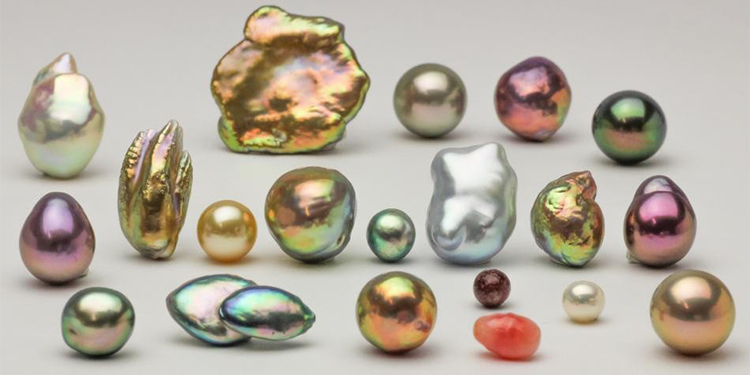
This guide will explore the range of pearl shapes and styles, from classic round pearls to exotic and unique shapes. We will provide you with the knowledge you need to make informed choices and appreciate the timeless elegance of these stunning gems.
How do pearls get their shape?
Farmers initiate by inserting spherical bead nuclei into the pearl-producing mollusks, which envelop the nuclei with a pearl ac. Though the aim is always to create a round pearl, things may go differently than intended. The pearl formation process is susceptible to irregularities and variations, leading to pearls that fall short of the desired round shape.
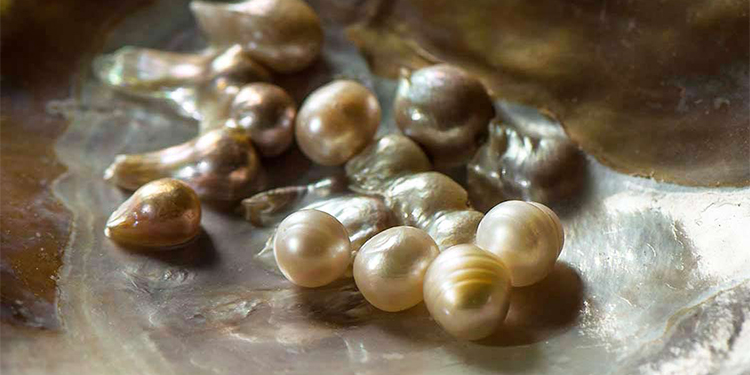
What happens during the formation?
The mollusk secretes nacre to encase the bead nucleus, and the pearl gradually develops as the mollusk's muscles gently rotate the nucleus. Any disturbance in the layering process can cause variations in the nacre, which is then added to the nucleus in successive layers.
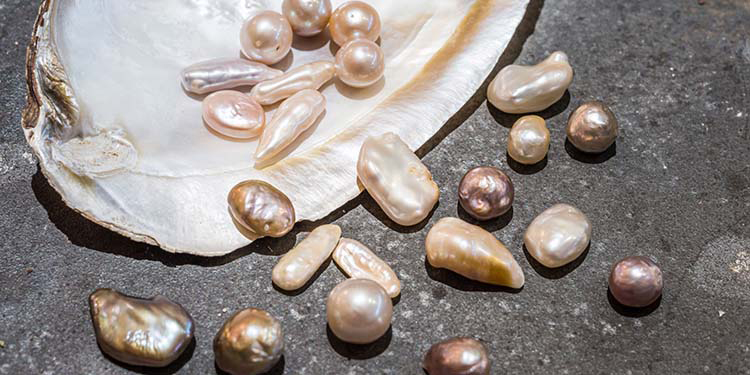
These disruptions to the pearl formation process can arise from various factors, including:
● Organic matter: Sometimes organic substances may adhere to the developing pearl. These substances undergo decomposition, releasing gases that create internal blisters between the layers of the nacre, which ultimately result in protrusions on the surface of the pearl. These protuberances can contribute to the unique appearance of the pearl.
● Multiple pearls in a single sac: If a small pearl attaches itself to a larger pearl, the pearl sac will envelop both pearls and produce successive layers of nacre. This process can result in a unique shape.
● Water temperature and salinity: The pearl formation process is susceptible to environmental factors, including water temperature and salinity changes. These changes can affect the pearl sac, leading to tears and distinctive marks on the developing pearl.
● Mollusk Anatomy: The anatomy of the mollusk can have a significant impact on the final shape of the pearl. During the formation, the pearl may become impeded by a muscle or organ in the mollusk, limiting its growing space and resulting in an irregular shape.
● External factors: External factors can also impact the final shape of a pearl during its development. As pearls rotate and move while growing, a pointed object constantly obstructing the pearl can produce a ringed or circled pearl.
What shapes do pearls come in?
There are three main types of pearls: natural pearls, cultured oyster pearls, and cultured freshwater pearls. Each type of pearl has its own unique set of shapes.
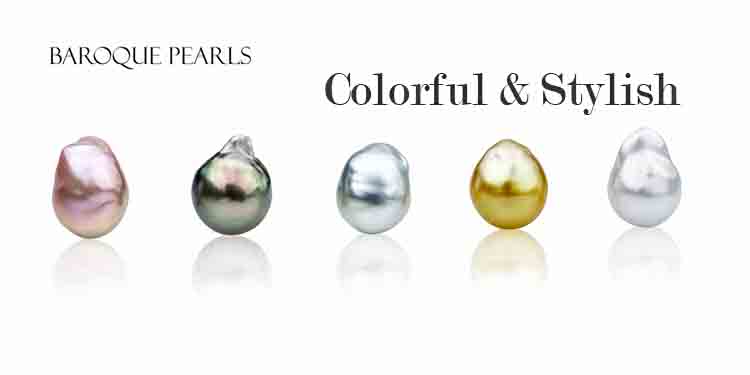
Shapes in Natural Pearls
Natural pearls are formed inside mollusks without human intervention. They are rare and come in various shapes, including round, off-round, oval, pear, baroque, semi-baroque, button, blister, and drop.
Shapes in Cultured Oyster Pearls
Cultured oyster pearls are formed by inserting a nucleus and a piece of mantle tissue into an oyster. Cultured oyster pearls come in round, oval, button, twinned, drop, baroque, semi-baroque, circled, blister, pear, and fantasy shapes.
Shapes in Cultured Freshwater Pearls
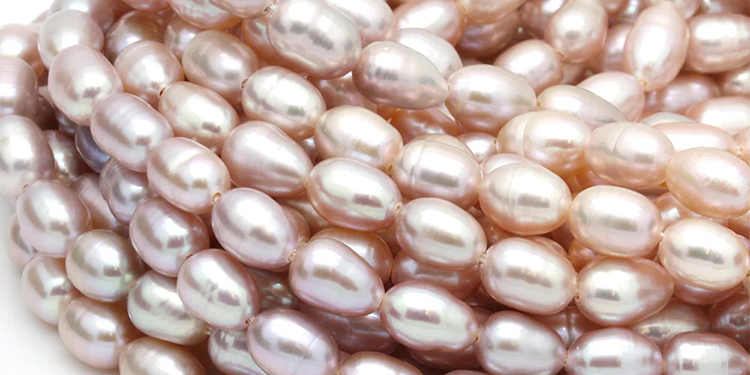
Cultured freshwater pearls are formed in mussels, which are freshwater mollusks. Cultured freshwater pearls come in various shapes: circle, cross, drop, long, round, oval, fantasy, button, potato, irregular, and rice.
How does shape affect its value?
The most desirable and valuable pearls are perfectly round, as they are rare and require special care and skill to cultivate.
Other shapes, such as oval, teardrop, and baroque, can also be valuable if they possess other desirable qualities, such as high luster, smooth surface, and uniform color. However, the value of these pearls may be lower than perfectly round pearls.
Pearls with irregular, distorted, or asymmetrical shapes are generally considered less valuable. However, there may be exceptions if the pearl possesses unique or artistic qualities that make it desirable to collectors.
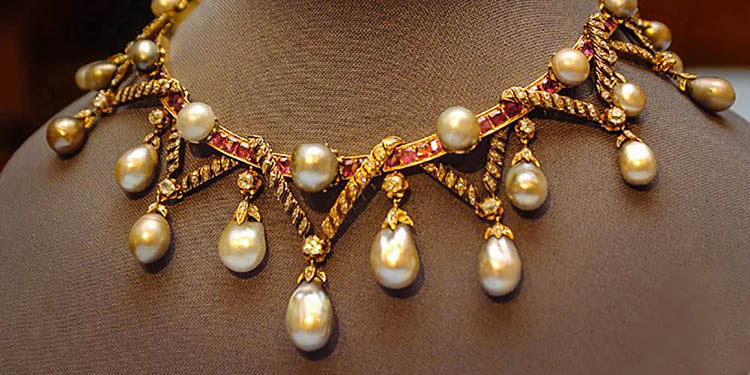
Ultimately, the value of a pearl is determined by a combination of factors besides the shape, including the size, luster, color, surface quality, and market demand. So remember that while the shape of a pearl is an important consideration, it is just one of several factors that can affect its overall value.
Tips for judging pearl shape
When evaluating its shape, consider the type of pearl you are examining. Here are a few tips for your help.
● Natural pearls: Mostly baroque
● Cultured pearls: Those with thin nacre are usually round.
● Akoya pearls: With thick nacre are off-round
● South Sea cultured pearls: these are rarely perfectly round
● Natural saltwater pearls: Usually baroque or semi-baroque
● Freshwater pearls (both cultured and natural) are mostly baroque.
Conclusion
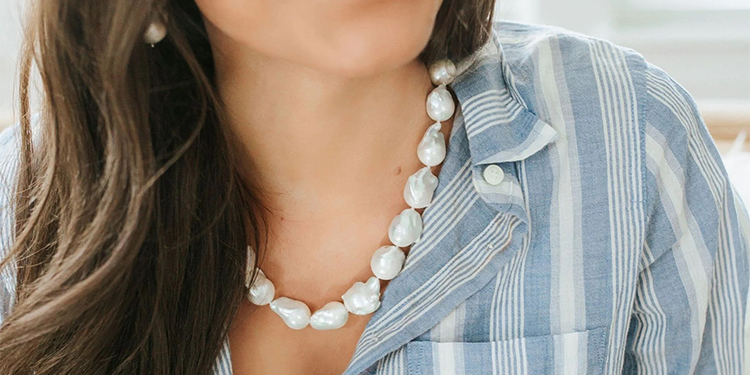
With their vast range of shapes and styles, pearls offer endless possibilities for creative expression and personalization. Whether you're hunting for a classic and timeless piece or a more unique and unconventional design, understanding the various pearl shapes and styles can assist you in finding the perfect amount of pearl jewelry to satiate your taste and style.


Leave a Comment